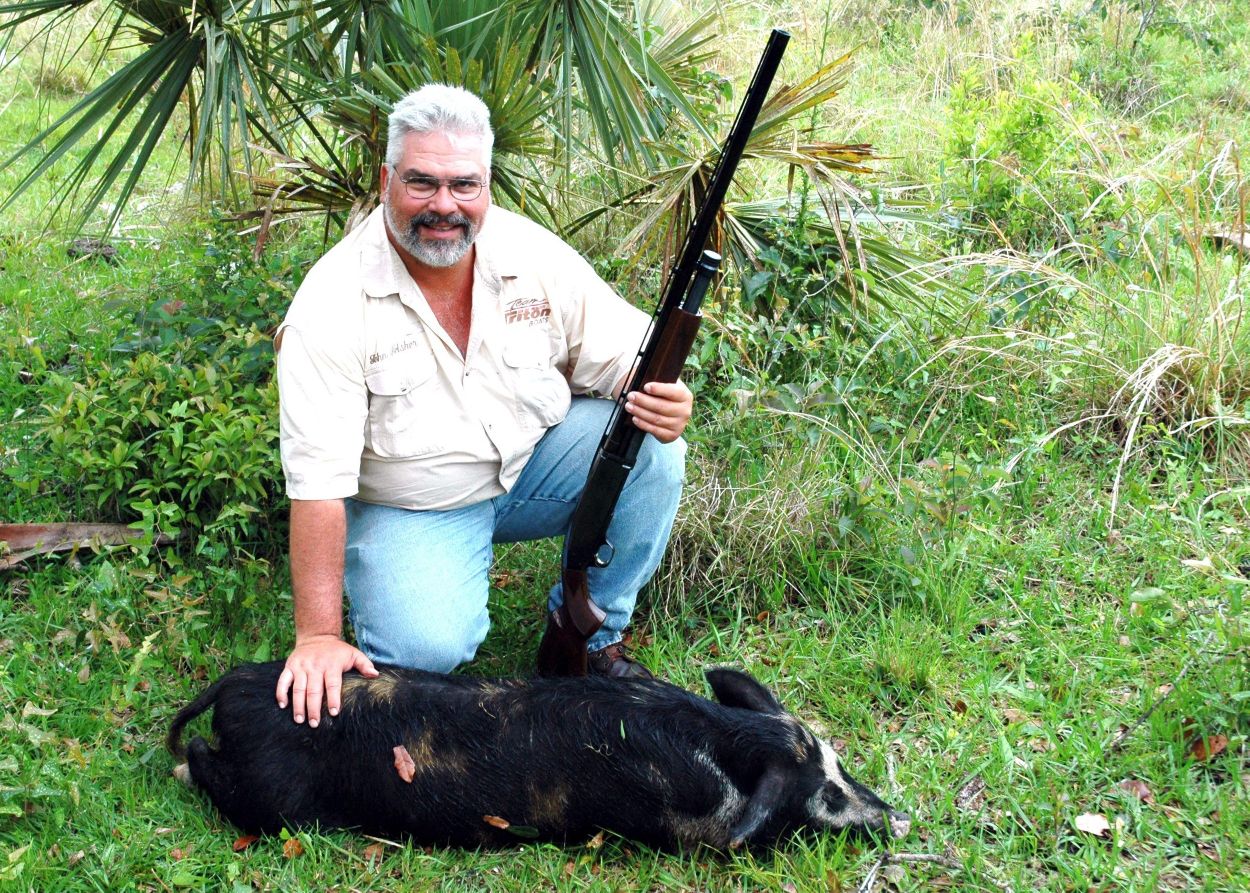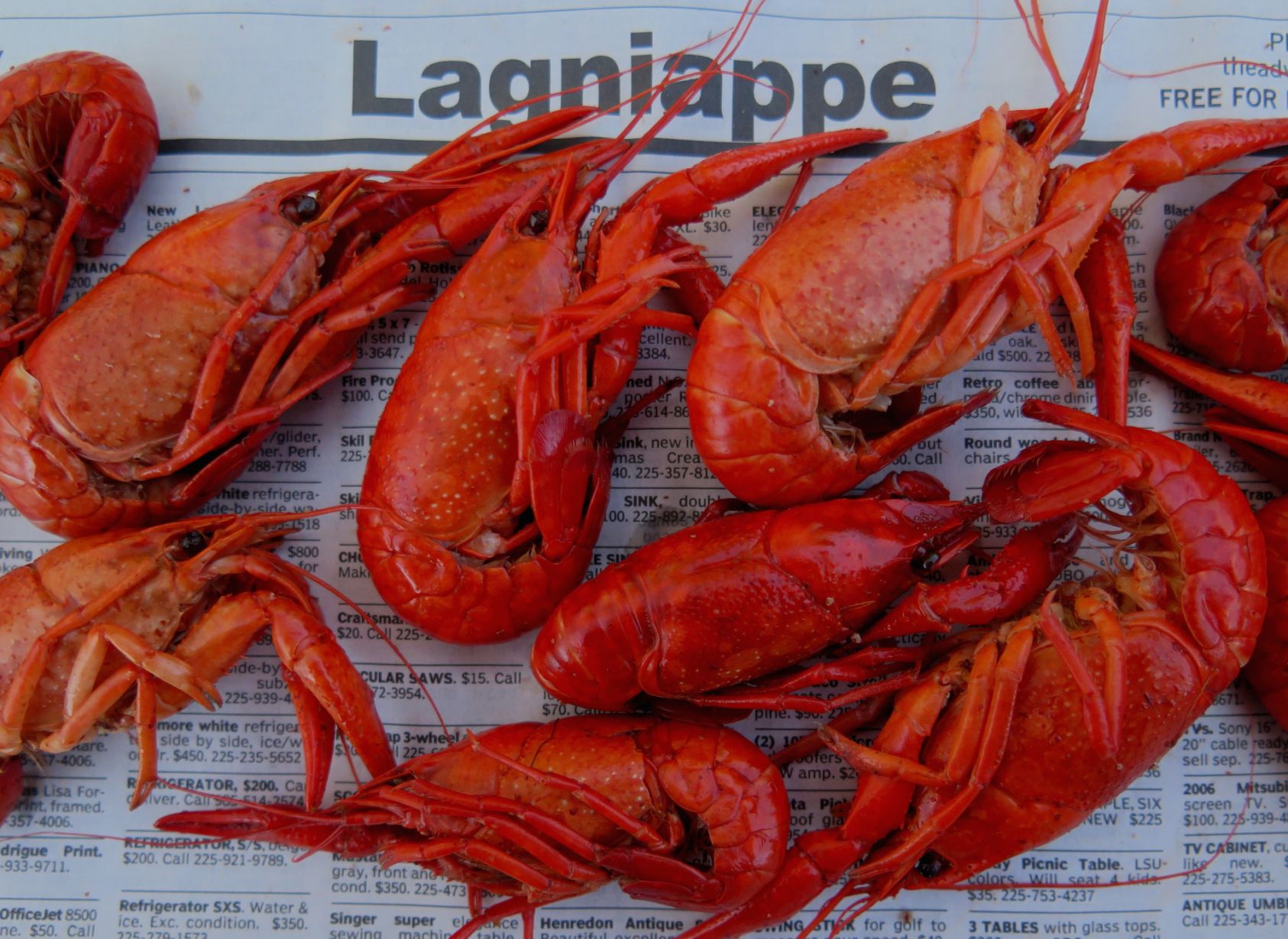Local scam investigated
April 22, 2015
Silence, then tears at Louviere hearing: Victim makes special request
April 22, 2015Hunting doesn’t have to stop just because most seasons close at the end of February each year. Besides turkey season in the spring, Louisiana sportsmen can hunt wild hogs all year long on private land without limit and take them as bonus game during most open seasons on public properties. Just check the local regulations first.
These hogs descended from domesticated pigs brought from Europe by early explorers and settlers. Many escaped into the wilds. Their descendants, plus introductions by sportsmen over the centuries, now number in the millions and can provide amazingly challenging sport.
BIG BORES FOR BIG BOARS
Bristling with razor sharp tusks and protected by a tough hide covering a thick shoulder “shield” of hardened scar tissue, a big feral boar makes a formidable adversary. Leaner and much more muscled than any barnyard pig, a big boar can take considerable punishment. While bowhunters arrow hogs, gun hunters should use high velocity rifles in such calibers as .270, .30-06, 7mm, .308 or similar calibers. With shotguns, use rifled slugs or 00 buckshot.
“I recommend at least a .243 or bigger,” advised Barry Estes, a hog hunter. “Usually, we use a .308. Under certain circumstances, a shotgun makes a great hog gun, if we can get within 25 to 30 yards. I use buckshot instead of slugs.”
FIND THE FOOD
Pigs typically stay close to groceries. Opportunistic feeders, hogs eat almost anything. Typically, pigs eat grasses, roots, tubers, fruits, bulbs and mushrooms. They particularly relish acorns and such agricultural crops as corn, rice, soybeans, peanuts, potatoes, watermelons and cantaloupe. They also eat any small invertebrates or other animals and birds they can catch. They even carrion. During times of poor habitat conditions, sows sometimes eat their own young.
“Hogs go wherever they can find enough food, water and shelter,” explained Josh Forbes, a hog hunter. “Sows and piglets wander around looking for food. Boars follow the sows. A piece of property might be overrun with hogs one year and not have a hog on it the next year, depending upon the foodand water situation.”
FOLLOW THE SIGNS
Hogs thrive in thick forests, swamps, crop fields — and even marshes. They particularly love dense river bottomlands and stream drainages. With a good pair of binoculars, scan fields or wooded edges for hogs at first and last light. Look for trails from cover to feeding areas and other sign.
Hogs leave abundant evidence of their presence. Hogs often wallow in muck to cool off and protect their skin from bugs or too much sun. Look for wallowings in soft muddy depressions. After leaving the wallows, hogs may rub against trees, fence posts, telephone or powerline poles, leaving the bottoms caked in mud. Big boars also scar trees by slashing them to sharpen their tusks.
Also, look for places where pigs rooted up the ground looking for acorns, tubers and other morsels. When rooting for food, hogs can make an area look like someone roto-tilled it. In warm weather, hogs seek the thickest, lowest, wettest cover they can find. In areas with too much water, which describes much of south Louisiana, look for any dry ground, such as a levee or spoil bank growing with abundant brush.
GROUND POUNDING FOR PIGS
Most hunters probably kill hogs from deer stands in the fall, but some people stalk them. Hogs can’t see as well as deer, but their sensitive noses can pick up scents from long distances. Move slowly and deliberately into the wind without making any sudden movements or loud noises. Keep trees or other cover between yourself and the pigs.
“Hogs are not that difficult to stalk,” Estes said. “They aren’t as concerned with predators as deer and are usually more concerned with food. As long as their noses stay to the ground, hunters can get close to them. If the hog raises its head, freeze.”
CALLING ALL HOGS
Hogs make considerable noise and may respond to calls. A sow communicates frequently with her piglets to keep them close and away from predators. Hunters can use this to their advantage.
“I often call pigs,” Estes explained. “I use a low, pig grunt call. Often, when I come upon several pigs, I drop the sow in her tracks. Frequently, I can call the juveniles back while they search for the sow and safety.
LET THE DOGS OUT
If sportsmen can’t find pigs by stalking or sitting in a stand, they can let dogs find them. Chase dogs smell the hogs and start howling. Once the hog turns to fight, hunters send in the catch dog, usually a scarred up pit bull with an attitude. The pit bull grabs the hog’s ear, nose or another vital organ until the hunters arrive to kill the hog with a handgun or knife.
WHERE TO GO?
Feral hogs thrive all across the state. Most wildlife management areas with suitable habitat hold good hog populations. Hunters without their own lands can often obtain permission to hunt just by asking farmers. Feral hogs cause considerable damage to crops. Pigs can also destroy fences and tear up ground with their tusks. Since hogs cause so much damage and multiple so quickly, many landowners welcome anyone who wants to kill pigs on their properties.
A sow can begin breeding when she reaches about six months old. She can give birth to two litters per year.
John N. Felsher shows off a wild hog he killed with a 10-gauge shotgun. With hunting season just about done around Louisiana, marksmen are reminded that wild hog season lasts all year in our state. With the pig population growing more and more in recent years, hunters are actually encouraged to harvest the animals, which are sometimes pests.










